Description
Buy MOTS-c Peptide at PeptideLabCo: Your Complete Guide to Quality, Benefits, and Usage

Mots C Peptide Mitochondrial-derived MOTS-c peptide orchestrates energy metabolism, supports insulin sensitivity, and promotes cellular resilience—yet sourcing research-grade purity can be challenging. PeptideLabCo solves this by offering USA-made MOTS-c at 99 percent purity, complete with third-party testing and expert guidance. In this guide, you’ll discover what MOTS-c peptide is, explore science-backed benefits, learn precise dosing and administration, assess safety considerations, compare it with other peptides, and understand how to purchase high-quality MOTS-c at PeptideLabCo.
What Is MOTS-c Peptide? Definition, Structure, and Key Properties
MOTS-c peptide is a 16-amino-acid mitokine encoded by the mitochondrial 12S rRNA gene that activates AMPK to improve energy balance and metabolic health. This mitochondrial open reading frame type-c regulates glucose uptake, fat oxidation, and cellular stress responses through mitochondrial-nuclear crosstalk. For example, MOTS-c enhances metabolic flexibility by promoting fatty acid oxidation in skeletal muscle, laying the foundation for its broad health applications.
What is MOTS-c peptide and its origin?
MOTS-c is a mitochondrial-derived peptide (MDP) translated from the 12S rRNA region of mtDNA, acting as a mitohormone that communicates metabolic status to the nucleus. It was first identified as part of the mitochondrial-nuclear signaling network that adjusts cellular energy utilization in response to stress. This origin story underscores MOTS-c’s role in coordinating whole-cell metabolism and prepares us to examine its precise molecular makeup.
What is the molecular composition and sequence of MOTS-c?
Below is a detailed breakdown of MOTS-c’s molecular attributes:
| Sequence Segment | Chemical Formula | Key Identifier |
|---|---|---|
| Met-Arg-Trp-Gln-Glu-Met-Gly-Tyr-Ile-Phe-Tyr-Pro-Arg-Lys-Leu-Arg | C101H152N28O22S2 | CAS 1627580-64-6 |
| — | Molecular weight: 2174.64 g/mol | PubChem SID 255386757 |
This composition table clarifies the peptide’s size, elemental makeup, and registry numbers, emphasizing its research-grade identity. Understanding MOTS-c’s molecular profile highlights its functional benefits on metabolism.
How does MOTS-c relate to mitochondrial health and metabolism?
MOTS-c activates AMP-activated protein kinase (AMPK), the master regulator of cellular energy homeostasis, to increase glucose uptake and fatty acid oxidation. It also influences mitochondrial biogenesis by upregulating nuclear genes involved in energy production. These mechanisms together enhance metabolic flexibility, paving the way to explore MOTS-c’s clinically relevant benefits.
What Are the Science-Backed Benefits of MOTS-c Peptide?

MOTS-c peptide delivers multifaceted health advantages by modulating key metabolic pathways, boosting cellular repair, and strengthening stress resistance. Its ability to activate AMPK and improve mitochondrial function translates into concrete outcomes for metabolic health, anti-aging, physical performance, and more. Below, we break down each benefit cluster and its underlying rationale.
How does MOTS-c improve metabolic health and insulin sensitivity?
MOTS-c enhances glucose uptake in muscle and adipose tissue, reduces blood glucose levels, and promotes lipolysis to prevent obesity.
- It increases GLUT4 translocation via AMPK activation, supporting efficient glucose clearance.
- By promoting fatty acid oxidation, MOTS-c reduces lipid accumulation that contributes to insulin resistance.
- It lowers hepatic gluconeogenesis to maintain stable blood sugar levels.
MOTS-c and Metabolic Health
MOTS-c, a mitochondrial-derived peptide, has been shown to improve metabolic health by enhancing glucose uptake and fatty acid oxidation. Research indicates that MOTS-c activates AMPK, a key regulator of cellular energy homeostasis, leading to improved insulin sensitivity and reduced blood glucose levels.
These effects create a robust metabolic profile, leading into MOTS-c’s anti-aging properties.
What anti-aging and longevity effects does MOTS-c offer?
Mots C Peptide promotes mitochondrial biogenesis and cellular repair while enhancing stress resilience.
- It upregulates PGC-1α and NRF1 to boost mitochondrial replication and function.
- It reduces reactive oxygen species and inflammatory markers, delaying cellular senescence.
- It supports protein homeostasis by activating autophagy pathways.
MOTS-c and Anti-Aging Effects
Studies suggest that MOTS-c promotes mitochondrial biogenesis and cellular repair, which can delay cellular senescence. By upregulating genes involved in mitochondrial replication and function, Mots C Peptide may reduce oxidative stress and inflammatory markers, contributing to anti-aging effects.
Such comprehensive anti-aging actions reinforce MOTS-c’s value in longevity research and move us toward muscle health applications.
How does MOTS-c support muscle health and physical performance?
Mots C Peptide enhances endurance, prevents muscle wasting, and promotes recovery.
- It increases mitochondrial density in skeletal muscle, improving ATP production for sustained exercise.
- It stimulates protein synthesis pathways to counteract sarcopenia and support muscle growth.
- It reduces exercise-induced oxidative stress, accelerating post-workout recovery.
MOTS-c and Muscle Health
MOTS-c has been shown to enhance endurance and prevent muscle wasting. Research indicates that Mots C Peptide increases mitochondrial density in skeletal muscle, improving ATP production for sustained exercise. It also stimulates protein synthesis pathways, supporting muscle growth and recovery.
This muscle-centric profile naturally extends to MOTS-c’s broader systemic effects.
What are the additional benefits for inflammation, cardiovascular, and bone health?
Mots C Peptide offers secondary support across multiple systems:
- Inflammation: It downregulates TNF-α and IL-6, reducing chronic inflammatory signaling.
- Cardiovascular: It improves endothelial function and mitigates vascular calcification.
- Bone health: It enhances osteoblast activity and collagen synthesis to support bone density.
These complementary benefits complete MOTS-c’s systemic impact and introduce safe usage guidelines.
How to Use Mots C Peptide? Dosage, Administration, and Reconstitution Guide

Accurate dosing and proper reconstitution ensure MOTS-c peptide’s effectiveness in research protocols. Below we outline dosing protocols, step-by-step reconstitution, and best practices for administration.
What are the recommended MOTS-c dosing protocols and cycle lengths?
Researchers often administer Mots C Peptide subcutaneously at doses ranging from 5 mg to 15 mg per week, divided into multiple injections for steady exposure.
| Protocol Type | Dose Range (mg/week) | Cycle Duration |
|---|---|---|
| Metabolic Enhancement | 5 – 10 | 4 – 8 weeks |
| Anti-Aging Research | 10 – 15 | 6 – 12 weeks |
These protocols balance efficacy with tolerance, preparing you for the reconstitution process.
How is MOTS-c peptide properly reconstituted for injection?
To reconstitute lyophilized Mots C Peptide safely, follow these steps:
- Sanitize your workspace and use sterile gloves.
- Add bacteriostatic water equal to the vial’s label volume.
- Gently swirl until all peptide dissolves; never shake vigorously.
- Inspect the solution for particulates before use.
Careful reconstitution preserves peptide integrity and leads directly to precise administration.
What is the correct method for administering MOTS-c peptide?
Administer MOTS-c via subcutaneous injection in the abdominal area, rotating sites to minimize irritation.
- Use a 29-31 gauge insulin syringe for accurate delivery.
- Pinch a small skin fold and insert the needle at a 45-degree angle.
- Inject slowly and inspect the site for redness or swelling.
Adhering to these techniques supports consistent results and transitions into safety considerations.
What Are the Potential Side Effects and Safety Considerations of MOTS-c Peptide?
What common side effects have been reported with MOTS-c use?
Reported mild adverse effects include injection site irritation, temporary fatigue, nausea, and occasional headaches. These typically resolve within hours of dosing. Recognizing these responses helps inform legal and regulatory disclaimers.
What legal and regulatory disclaimers apply to MOTS-c peptide?
Mots C Peptide is designated for research use only and is not approved by the FDA for human consumption. It is also prohibited by WADA in competitive sports. These conditions underscore the importance of compliance and ethical research practices.
How to ensure safe handling and storage of MOTS-c peptide?
Proper storage preserves MOTS-c potency and safety:
- Store lyophilized peptide at –20 °C in a desiccated environment.
- Keep reconstituted solution at 4 °C and use within 14 days.
- Avoid repeated freeze-thaw cycles to maintain stability.
These precautions complete the safety profile and guide your purchase decisions.
Where and How to Buy High-Purity MOTS-c Peptide at PeptideLabCo?
What purity standards and quality assurances does PeptideLabCo provide?
PeptideLabCo’s Mots C Peptide meets or exceeds 99 percent purity as confirmed by HPLC and mass spectrometry. Each batch includes a certificate of analysis detailing sequence verification and impurity profiles. These assurances position PeptideLabCo as a trusted supplier of high-integrity peptides.
How does PeptideLabCo ensure reliable shipping and customer service?
Orders over $150 ship free via temperature-controlled overnight courier. Tracking notifications arrive at purchase, and customer service specialists are available 24/7 to address technical questions. This support framework ensures peptides arrive promptly and in optimal condition.
What should buyers look for when choosing a MOTS-c peptide supplier?
When selecting a supplier, prioritize:
- Verified purity and third-party testing reports.
- Transparent manufacturing origin (preferably USA-made).
- Clear legal disclaimers and compliance with research-use standards.
Understanding these criteria secures your research foundation and leads to deeper comparisons with other peptides.
How Does MOTS-c Peptide Compare to Other Research Peptides?
What are the key differences between MOTS-c and peptides like Humanin or Ipamorelin?
| Peptide | Primary Mechanism | Distinct Benefit | Ideal Research Use |
|---|---|---|---|
| MOTS-c | Activates AMPK pathway | Improves metabolic health | Metabolic syndrome and aging studies |
| Humanin | Protects against apoptosis | Enhances cell survival | Neurodegenerative and cardiovascular work |
| Ipamorelin | Stimulates GH release | Supports lean mass and recovery | Growth hormone and muscle regeneration |
How does Mots C Peptide mechanism of action differ from other mitochondrial peptides?
Mots C Peptide uniquely triggers the Folate-AICAR-AMPK axis to adjust nuclear gene expression, whereas peptides like humanin modulate apoptotic pathways. By integrating mitochondrial status with genomic regulation, MOTS-c provides a dual mitochondrial-nuclear signaling role crucial for systemic energy balance.
This nuance informs synergy possibilities in combined protocols.
What are the advantages of combining MOTS-c with other peptides?
Combining Mots C Peptide with peptides like CJC-1295 or AOD-9604 can yield synergistic effects:
- Enhanced metabolic and anti-aging outcomes by pairing AMPK activation with growth hormone-releasing peptides.
- Improved muscle anabolism when MOTS-c’s mitochondrial support dovetails with IGF-1 modulation.
- Broader systemic resilience by targeting both energy regulation and cellular repair pathways.
These strategies guide advanced research designs and point toward future clinical insights.
What Are the Latest Research Insights and Future Prospects for MOTS-c Peptide?
What do recent studies reveal about MOTS-c’s role in metabolic and aging research?
Recent animal research demonstrates that chronic MOTS-c administration:
- Reduces diet-induced obesity by over 20 percent in mice.
- Increases median lifespan by enhancing mitochondrial biogenesis in aged rodents.
- Improves insulin sensitivity comparable to standard antidiabetic agents in preclinical models.
These insights foster anticipation for human trial developments and set the stage for clinical translation.
Are there ongoing clinical trials or long-term safety data for MOTS-c?
Currently, Mots C Peptide is under early-phase investigation for metabolic syndrome in humans, focusing on safety, pharmacokinetics, and dose escalation. While long-term safety profiles are pending, existing acute studies report no serious adverse events at research doses. This emergent data will determine future therapeutic prospects.
How might MOTS-c influence future therapies in longevity and metabolic health?
Mots C Peptide ability to recalibrate cellular metabolism positions it as a candidate for combination therapies targeting age-related diseases, type 2 diabetes, and mitochondrial disorders. Advances may include oral analogs, targeted delivery systems, and integration into personalized longevity protocols. These possibilities showcase MOTS-c’s potential to transform metabolic and aging research.
Frequently Asked Questions About Buying and Using MOTS-c Peptide at PeptideLabCo
What is MOTS-c peptide used for?
Mots C Peptide is primarily used in laboratory and preclinical research to investigate metabolic regulation, insulin sensitivity enhancement, anti-aging mechanisms, and muscle function support through AMPK activation.
How do I administer MOTS-c peptide safely?
Mots C Peptide is administered by subcutaneous injection—typically in the abdomen—using sterile insulin syringes. Proper reconstitution, rotating injection sites, and dosage adherence ensure consistent and safe delivery.
What side effects should I expect from MOTS-c?
Commonly reported mild side effects include injection site irritation, brief fatigue, nausea, and headaches, all of which generally resolve quickly with no long-term impact.
Is MOTS-c peptide FDA approved?
Mots C Peptide is not FDA approved for human use and is licensed strictly for research applications under laboratory conditions.
How do I store MOTS-c peptide after purchase?
Store lyophilized Mots C Peptide at –20 °C in a desiccant-protected environment. Once reconstituted, keep at 4 °C and use within 14 days, avoiding freeze-thaw cycles to maintain stability.
PeptideLabCo’s rigorous quality controls and expert support ensure you receive Mots C Peptide that meets the highest research standards. For pricing, detailed protocols, or custom orders, contact our technical team to advance your metabolic and longevity investigations.

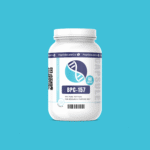
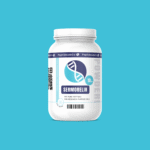
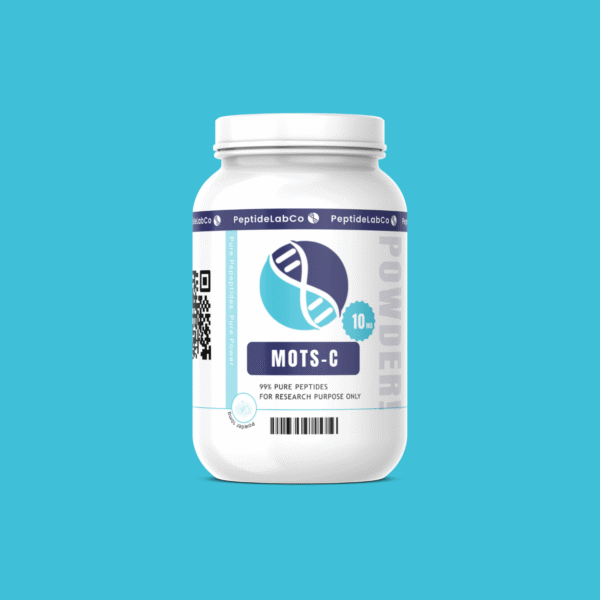

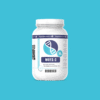
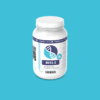

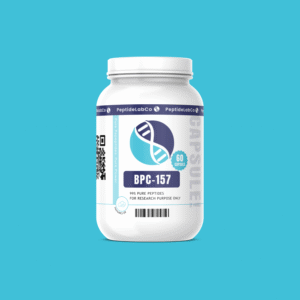
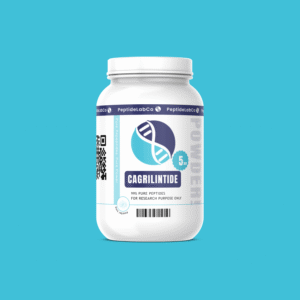

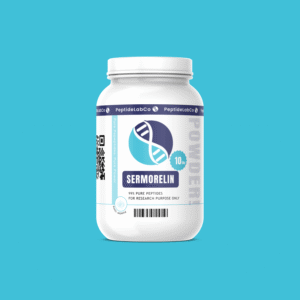
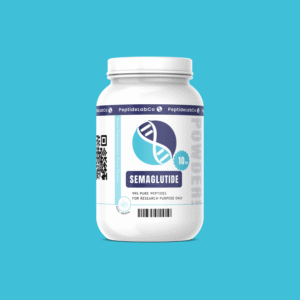 What is Semaglutide
What is Semaglutide
Reviews
There are no reviews yet.